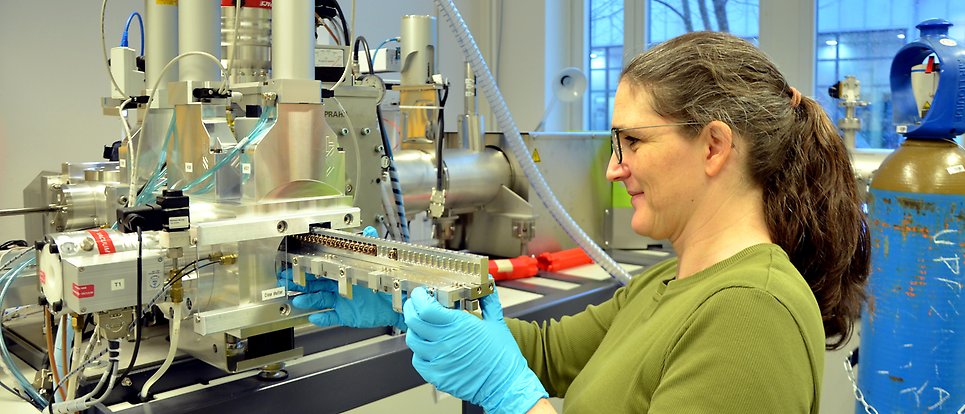Radiocarbon dating and mass spectrometry

The Tandem Laboratory performs several thousand radiocarbon measurements every year. We also offer complete service including sample preparation and determination of the stable isotopes ¹³C and ¹⁵N.
In our radiocarbon lab, we combine ultrasensitive accelerator mass spectrometry (AMS) with advanced sample preparation methods. Our dedicated MICADAS accelerator is specially designed for high-quality mass spectrometry of carbon isotopes and efficient handling of very different sample types.
We date samples for a diverse range of applications, for example archaeology, geology, glaciology, biology, and medicine. Below we describe some areas more in detail, to which the Tandem Laboratory’s research has been contributing substantially.
Do you have samples for radiocarbon dating?
AMS in geology and archaeology
In addition to the stable carbon isotopes 12C and 13C, the atmosphere contains the radioactive isotope 14C, with a half-life of 5730 years. This isotope is constantly replenished by cosmic radiation. All living beings take up carbon from the atmosphere through their metabolism. Since carbon is constantly replaced, they retain a constant level of 14C. When they die, the 14C decays while the amount of stable isotopes remain constant. By measuring the ratio of remaining 14C to 12C a sample can be dated.
As this ratio is typically of the order of 10-14 for archaeological samples, highly elaborate sample preparation procedures and precise measurements have to be performed to unambiguously determine the age of a sample. Our laboratory has a long-standing expertise in both development and application of these procedures and performs state-of-the-art radiocarbon dating with several thousands of measurements annually for miscellaneous applications.
AMS in biomedicine
A variety of complementary techniques have been used in connection with accelerator mass spectrometry in the field of biomedicine, facilitating extreme measurement capabilities. Subsequently, several new interdisciplinary research areas, with unique analytical capabilities, have emerged.
Sensitivity
In pharmacology, we have demonstrated detection of 14C-marked drugs in human blood in the zeptomole level range (1 zeptomole = 10-21 mole).
Small samples
Conventional radiocarbon dating requires milligrams of carbon. We routinely measure samples of only a few micrograms.
Microdosing (clinical phase 0 trials)
New drug candidates can be administered directly to human subjects at an early stage to extract important pharmacokinetic data. This provides information on how the drug is absorbed, distributed, metabolized and excreted.
Regenerative medicine
In a long-term collaborative work with Karolinska Institutet we have developed a method to study specific cell types and extract neurogenesis rates for various parts of the human brain, previously not possible.
Forensic Sciences
In collaboration with the law authorities, date of birth and death can be determined for samples such as teeth from deceased individuals.
Publications
Diploid hepatocytes drive physiological liver renewal in adult humans
Part of CELL SYSTEMS, p. 499-+, 2022
- DOI for Diploid hepatocytes drive physiological liver renewal in adult humans
- Download full text (pdf) of Diploid hepatocytes drive physiological liver renewal in adult humans
Evidence for postnatal neurogenesis in the human amygdala
Part of Communications Biology, 2022
- DOI for Evidence for postnatal neurogenesis in the human amygdala
- Download full text (pdf) of Evidence for postnatal neurogenesis in the human amygdala
Adipose lipid turnover and long-term changes in body weight
Part of Nature Medicine, p. 1385-1389, 2019
Cell generation dynamics underlying naive T-cell homeostasis in adult humans
Part of PLoS biology, 2019
- DOI for Cell generation dynamics underlying naive T-cell homeostasis in adult humans
- Download full text (pdf) of Cell generation dynamics underlying naive T-cell homeostasis in adult humans
Dynamics of oligodendrocyte generation in multiple sclerosis
Part of Nature, p. 538-+, 2019
Research infrastructures within archaeology we contribute to
Swedigarch – Swedish National Infrastructure for Digital Archaeology

